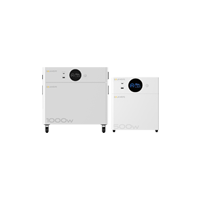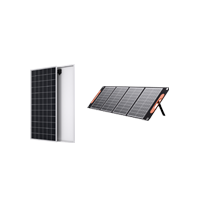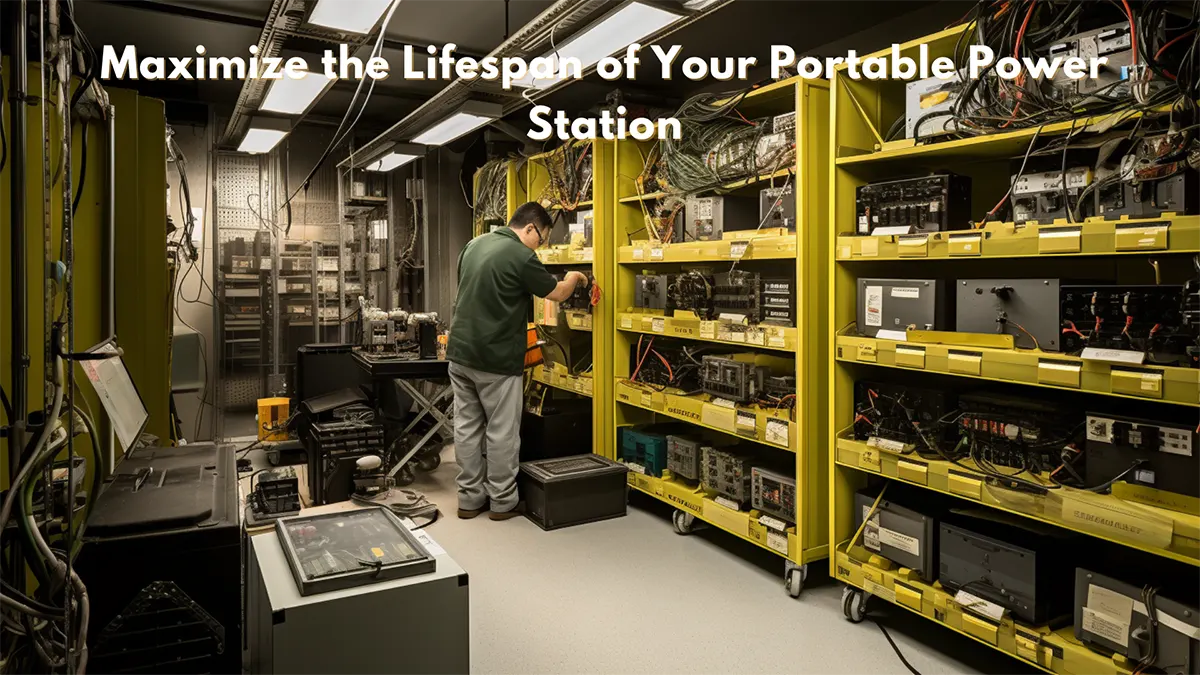Products Related
Maximize the Lifespan of Your Portable Power Station
Table of Contents
- Introduction
- Understanding Your Power Station’s Battery
- Managing Power Usage and Storage
- Closing Thoughts
- FAQs
Introduction
Portable power stations have become an essential tool for many in our increasingly mobile and energy-dependent world. From camping trips and outdoor events to emergency backup power, these devices offer a reliable source of electricity on the go. In this article, we’ll focus on power stations equipped with lithium iron phosphate (LiFePO4) batteries, known for their safety, longevity, and efficiency. However, to maximize the lifespan of your portable power station, a proper maintenance regimen is crucial. So, let’s dive into the details.
Understanding Your Power Station’s Battery
Why Lithium Iron Phosphate (LiFePO4) Batteries?
Before we delve into maximizing lifespan, let’s understand what makes LiFePO4 batteries unique. The distinguishing features of these batteries, including high safety standards, significant cycle life, lower environmental impact, and exceptional thermal stability, make them an ideal power source for your portable power station. Additionally, they are less prone to overheating and can maintain a consistent charge for longer periods.
Charging Your Power Station Correctly

A common question asked by many users is whether the charging method for LiFePO4 batteries differs from lead-acid batteries. The answer is yes. While lead-acid batteries typically follow a three-stage charge process, LiFePO4 batteries use a two-stage process.
A common question asked by many users is whether the charging method for LiFePO4 batteries differs from lead-acid batteries. The answer is yes. While lead-acid batteries typically follow a three-stage charge process, LiFePO4 batteries use a two-stage process.
Understanding the Two-Stage Charging Process
The two-stage process begins with a constant current charge until it’s close to the terminal voltage, followed by a constant voltage charge. For instance, a 3.2V 100Ah battery cell has a terminal charge voltage of 3.65V. Initially, the battery cell is charged at a constant current, say 50A (charge rate is 0.5C). The voltage increases rapidly initially and once close to 3.65V, it switches to a constant voltage charge, with current gradually decreasing and voltage seeing little change.
To extend the life of LiFePO4 batteries, it’s also recommended to keep the battery voltage difference before connection under 0.1V. This reduces the chance of imbalance among individual batteries. If your battery does go out of balance, you can use a charger to recharge the battery separately, thereby rebalancing it.
Smart Charging Practices to Prolong Battery Life
To prolong your battery life, consider adopting shallow charging and discharging practices. The so-called shallow charge and shallow discharge can lengthen the battery’s lifespan. This approach entails charging the battery when it’s 80-90% full, preventing it from overcharging which could affect the battery’s performance and lifespan.
However, once a month, it’s beneficial to complete a full charge-discharge cycle. This practice allows the Battery Management System (BMS) to recalibrate and update the state of charge (SOC).
Managing Power Usage and Storage
Understanding the Impact of Temperature on Your Battery
Temperature can have a significant effect on battery performance and longevity. Both extreme heat and cold can be detrimental. In cold conditions, the electrolyte no longer maintains its optimal shape, which hampers efficient ion movement and exchange. On the other hand, high temperatures can cause the electrodes to expand, facilitating ion movement but potentially damaging the electrodes. Therefore, keeping your power station at a stable, moderate temperature is advisable.
The Impact of Load and Discharge Rates
Just as with charging, the manner in which you discharge your battery can affect its lifespan. Each battery has a maximum working current limit controlled by the BMS. To optimize capacity efficiency and prolong battery life, it’s recommended to avoid exceeding this limit.
Full Discharge vs Partial Discharge
While LiFePO4 batteries have a fully charged voltage level of about 3.65V and a fully discharged voltage of around 2V, you don’t necessarily need to fully discharge the battery every time. In fact, it’s best to avoid deep discharges when possible. There’s a direct correlation between the depth of discharge and the cycle life of the battery. Shallow discharges will typically result in more charge cycles, thereby extending battery life.
Accounting for Battery Self-Discharge
An important point to remember is that all batteries self-discharge over time, and this self-discharge rate can vary depending on temperature and the specific battery type. Most LiFePO4 batteries have a self-discharge rate of 0.5% to 3% per month. However, this rate can drastically increase at lower temperatures. Understanding this concept will help you manage your battery more effectively when it’s not in use.
Closing Thoughts
As we’ve seen, maximizing the lifespan of portable power stations involves a lot more than just plugging them in and charging. Understanding the characteristics of LiFePO4 batteries and how they respond to different charging and discharging practices, temperature changes, and load adjustments can significantly enhance your power station’s performance and longevity. Always remember that proper maintenance and use of your power station will lead to long-lasting, reliable power wherever and whenever you need it.
FAQs
Q1: Can I use my lead-acid battery charger to charge my LiFePO4 battery?
A1: Yes, you can. Just make sure it meets a certain standard and cannot include the sulfate removal device.
Q2: What should be the ideal charge and discharge levels to extend my battery life?
A2: Ideally, you should start charging when your LiFePO4 battery is between 80% to 90% discharged. Charging to about 90% is also beneficial to extend battery life.
Q3: Can I use my LiFePO4 battery to its full capacity?
A3: Yes, but it’s not recommended if you want to maximize lifespan. The best practice is to avoid fully depleting or fully charging your battery.
Q4: How often should I perform a full discharge and charge cycle?
A4: You should aim to do a full charge-discharge cycle once a month. It helps your battery’s BMS recalibrate the State of Charge.
Q5: Does temperature affect my LiFePO4 battery?
A5: Yes, temperature significantly affects your LiFePO4 battery. The battery operates best within a certain temperature range. Too high or too low temperatures can negatively impact the battery performance and lifespan.
Q6: What’s the self-discharge rate of LiFePO4 batteries?
A6: Most LiFePO4 batteries have a self-discharge rate of 0.5% to 3% per month. This rate may increase with high temperatures.
Q7: What does a Battery Management System (BMS) do?
A7: A BMS protects your battery from damage due to overcharging, over-discharging, overheating, and more. It helps to maximize the lifespan of your battery.
Q8: Is it essential to balance the battery cells in my LiFePO4 battery?
A8: Yes, cell balancing is crucial to ensure all cells are charged and discharged evenly. It helps in maximizing the lifespan and performance of your battery.
Solahope M800 Portable Power Station
Solahope M2400 Portable Power Station
Solahope M3600 Portable Power Station




